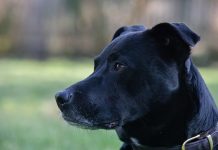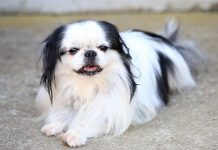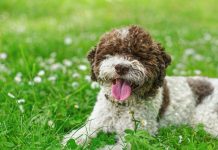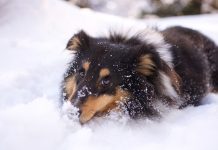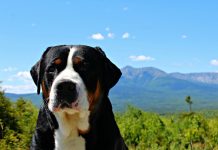History and Origins of the Australian Cattle Dog Breed

The Australian Cattle Dog (ACD), also known as the Blue Heeler or Queensland Heeler, is a hardworking and resilient breed developed in Australia for herding livestock, particularly cattle. Here’s a look at the history and origins of the Australian Cattle Dog:
- Early Development: The Australian Cattle Dog was developed in the 19th century by Australian settlers who needed a robust and versatile dog capable of working in harsh and remote conditions. The breed’s ancestors include Collies brought from England, Dingoes (wild Australian dogs), and other breeds like Dalmatians and Kelpies.
- Thomas Hall and the Hall’s Heelers: The breed’s development is often credited to Thomas Hall, a cattle rancher in New South Wales, who crossed his imported blue merle Collies with dingoes to create a sturdy and hardworking herding dog known as the “Hall’s Heelers.” These dogs were later refined by other breeders to become the modern Australian Cattle Dog.
- Herding Ability: Australian Cattle Dogs were specifically bred for their exceptional herding abilities. They are known for their intelligence, agility, and tenacity when working livestock, especially cattle. They use a unique style of nipping at the heels (hence the name “Heeler”) to control and move cattle.
- Recognition and Standardization: The breed gained recognition in Australia and was first exhibited as the Australian Cattle Dog in 1897. The Australian National Kennel Council (ANKC) officially recognized the breed in 1903, and the American Kennel Club (AKC) followed suit in 1980.
- Modern Role: Today, Australian Cattle Dogs are still valued as working dogs on farms and ranches around the world. They excel in herding, obedience, agility, and other dog sports. They are also popular as loyal companions and active family pets.
Physical Characteristics and Appearance of Australian Cattle Dogs
Australian Cattle Dogs are medium-sized, muscular, and well-balanced dogs known for their endurance and agility. Here are the key physical characteristics and appearance of Australian Cattle Dogs:
- Size: Australian Cattle Dogs are medium-sized dogs, with males typically standing 18 to 20 inches (46 to 51 cm) tall at the shoulder, and females slightly smaller at 17 to 19 inches (43 to 48 cm). They generally weigh between 35 to 50 pounds (16 to 23 kg).
- Build: They have a compact and sturdy build, with a deep chest and strong legs designed for endurance and agility. The body is slightly longer than tall.
- Coat: The breed has a short, dense, and weather-resistant double coat. The outer coat is straight and harsh, providing protection from the elements, while the undercoat is dense and soft.
- Color and Markings: Australian Cattle Dogs are known for their unique coat colors, including blue, red, blue mottled, and red mottled. They often have speckled or “mottled” patterns, and some may have tan markings on the face, chest, legs, and tail.
- Head: They have a broad skull, a strong muzzle, and dark, oval-shaped eyes that convey an alert and intelligent expression. The ears are medium-sized, set wide apart, and pricked when alert.
- Tail: The tail is set moderately low, and typically carried in a natural curve. It is often docked in some regions, but full tails are becoming more common.
- Overall Appearance: Australian Cattle Dogs have a confident and alert demeanor, reflecting their working heritage. They are agile, muscular, and exhibit strength and stamina.
Australian Cattle Dogs are known for their striking appearance, intelligence, and unwavering loyalty to their families. Their unique coat colors and markings make them easily recognizable, while their strong work ethic and versatility continue to make them valuable working dogs and beloved companions.
Australian Cattle Dog Temperament and Personality Traits
Australian Cattle Dogs (ACDs) possess a distinctive temperament shaped by their history as hardworking herding dogs. Here are some key personality traits and characteristics of Australian Cattle Dogs:
- Intelligent: ACDs are highly intelligent dogs known for their problem-solving abilities and quick learning. They excel in obedience training and can master complex tasks with proper guidance.
- Energetic: These dogs are incredibly energetic and require regular physical and mental stimulation. They have a strong work ethic and thrive in environments where they have a job to do or engaging activities to participate in.
- Alert and Watchful: Australian Cattle Dogs are naturally alert and vigilant. They make excellent watchdogs and will alert their owners to any unusual activity or potential threats.
- Loyal and Protective: ACDs are fiercely loyal to their families and can be protective of their loved ones and territory. They form strong bonds with their owners and are known for their devotion.
- Independent: While loyal and affectionate, Australian Cattle Dogs can also be independent-minded. They may exhibit a stubborn streak and require patient and consistent training.
- High Prey Drive: Due to their herding instincts, ACDs have a strong prey drive. They may chase smaller animals, so early socialization is crucial to manage this behavior.
- Social: With proper socialization from a young age, Australian Cattle Dogs can be friendly and sociable with people and other dogs. Early exposure to different environments and situations helps them become well-adjusted adults.
- Athletic and Agile: ACDs are agile and athletic dogs, capable of impressive feats of speed and endurance. They excel in dog sports like agility, obedience, herding trials, and flyball.
- Assertive and Confident: Australian Cattle Dogs have a confident demeanor and assertive nature. They thrive in environments where they are given clear leadership and guidance.
- Vocal: ACDs are known for their tendency to bark, especially when excited or alert. Proper training can help manage excessive barking behaviors.
Overall, Australian Cattle Dogs are intelligent, active, and loyal companions with a strong work ethic and unique personality traits. They thrive in homes where they receive adequate exercise, mental stimulation, and positive reinforcement training.
Training and Socialization Needs for Australian Cattle Dogs
Australian Cattle Dogs are intelligent and energetic dogs that require consistent training and socialization to thrive. Here are some training and socialization tips for ACDs:
- Start Early: Begin training and socialization as soon as you bring your Australian Cattle Dog puppy home. Early exposure to different people, animals, and environments is crucial for developing good behavior and social skills.
- Positive Reinforcement: Use positive reinforcement techniques such as treats, praise, and toys to motivate and reward desired behaviors. ACDs respond well to rewards and will eagerly work to earn them.
- Obedience Training: Teach basic commands such as sit, stay, come, and heel. Practice these commands regularly in different settings to reinforce obedience and responsiveness.
- Channel Energy: Provide plenty of physical exercise and mental stimulation to prevent boredom and destructive behaviors. ACDs thrive on activities like jogging, hiking, fetch, and interactive games.
- Socialization with People and Animals: Expose your Australian Cattle Dog to various people, including children and strangers, as well as other dogs and pets. Positive interactions help prevent fearfulness or aggression towards unfamiliar individuals or animals.
- Focus on Engagement: ACDs enjoy working and engaging with their owners. Incorporate training sessions into daily routines and use interactive toys and games to keep their minds stimulated.
- Consistency and Patience: Australian Cattle Dogs can be strong-willed and independent, requiring patient and consistent training. Avoid harsh methods or punishment, as this can lead to resistance and distrust.
- Behavioral Challenges: Address any behavioral challenges such as nipping, herding behaviors, or excessive barking early on with positive training methods. Seek guidance from professional trainers if needed.
By providing structured training, regular exercise, and positive reinforcement, you can help your Australian Cattle Dog develop into a well-mannered and well-adjusted companion. Remember to be patient, consistent, and understanding of their unique personality traits and instincts.
Health Considerations and Common Issues in Australian Cattle Dogs
Australian Cattle Dogs (ACDs) are generally healthy and robust dogs, but like all breeds, they can be prone to certain health conditions. Understanding these potential health issues can help you provide the best care for your Australian Cattle Dog. Common health considerations for ACDs include:
- Hip Dysplasia: A genetic condition where the hip joint does not develop properly, leading to arthritis and mobility issues. Responsible breeding practices and regular exercise can help reduce the risk.
- Progressive Retinal Atrophy (PRA): A group of genetic eye diseases that cause degeneration of the retina, leading to vision impairment and blindness. Regular veterinary check-ups and screenings are important for early detection.
- Deafness: Some Australian Cattle Dogs can be born deaf or develop hearing loss due to genetic factors. Responsible breeders conduct hearing tests, and deaf dogs can still lead fulfilling lives with proper training and care.
- Elbow Dysplasia: Similar to hip dysplasia, this condition affects the elbow joint, leading to lameness and pain. Regular veterinary care and proper diet can help manage symptoms.
- Osteochondritis Dissecans (OCD): A joint disorder that affects growing puppies, causing abnormal cartilage development. Monitoring growth and providing appropriate nutrition can help prevent this condition.
- Patellar Luxation: A condition where the kneecap dislocates from its normal position, causing lameness and discomfort. Surgical intervention may be necessary in severe cases.
- Cataracts: A common eye condition characterized by clouding of the lens, leading to vision impairment. Regular eye exams can help diagnose and manage cataracts.
- Dental Issues: Australian Cattle Dogs are prone to dental problems such as periodontal disease and tooth decay. Regular tooth brushing and veterinary dental care are important for maintaining oral health.
- Heat Sensitivity: Due to their dense double coat, ACDs can be sensitive to heat. Provide plenty of shade, fresh water, and avoid strenuous exercise during hot weather to prevent heatstroke.
- Allergies: Some Australian Cattle Dogs may develop allergies to food or environmental triggers. Watch for signs of itching, skin irritation, or gastrointestinal issues and consult with a veterinarian if allergies are suspected.
Regular veterinary check-ups, proper nutrition, exercise, and preventive care are essential for maintaining the health and well-being of your Australian Cattle Dog. Early detection and intervention can help manage potential health issues and ensure a long, happy life for your canine companion.
Living with an Australian Cattle Dog: Suitable Environments and Lifestyle Considerations

Australian Cattle Dogs are active, intelligent, and energetic dogs that thrive in environments that cater to their natural instincts and needs. Here are some considerations for living with an Australian Cattle Dog:
- Space Requirements: ACDs benefit from living in homes with ample space and a secure, fenced yard where they can safely exercise and explore. They are not well-suited for apartment living unless provided with daily vigorous exercise.
- Regular Exercise: Australian Cattle Dogs require regular exercise and mental stimulation to prevent boredom and destructive behaviors. Plan for at least 1-2 hours of physical activity each day, including brisk walks, runs, or engaging games like fetch and agility training.
- Training and Mental Stimulation: ACDs thrive on training and enjoy having a job to do. Engage them in obedience training, agility courses, or herding activities to keep their minds active and fulfilled.
- Socialization: Early and consistent socialization is crucial for Australian Cattle Dogs to develop good behavior and manners around people and other animals. Expose them to various environments, sounds, and experiences from a young age.
- Strong Leadership: ACDs respond well to confident and consistent leadership. Establish yourself as the pack leader through positive reinforcement training and clear expectations.
- Challenges and Activities: Provide your Australian Cattle Dog with mental challenges and activities to keep them engaged and prevent boredom. Puzzle toys, interactive games, and tasks that stimulate their herding instincts are beneficial.
- Heat and Sun Protection: Due to their dense coat, ACDs can overheat easily in warm weather. Provide access to shade, fresh water, and avoid strenuous activities during the hottest part of the day.
- Family Dynamics: Australian Cattle Dogs form strong bonds with their families but may be wary of strangers. Early socialization is important to ensure they are comfortable with visitors and new situations.
- Routine and Structure: ACDs thrive on routine and predictability. Establish a consistent daily schedule for feeding, exercise, training, and rest to help them feel secure and well-balanced.
- Safety and Security: ACDs are protective of their families and territory. Properly socialized, they can be excellent watchdogs, but ensure they are well-behaved around guests and strangers.
In summary, Australian Cattle Dogs are loyal, energetic, and intelligent companions that require an active lifestyle, mental stimulation, and positive reinforcement training. Providing a suitable environment and meeting their specific needs will help ensure a harmonious and fulfilling life with your Australian Cattle Dog.
Australian Cattle Dog Variations and Breeding Practices
The Australian Cattle Dog (ACD) breed is known for its uniformity and standardization, with relatively limited variations compared to some other breeds. However, within the breed, there can be some distinctions based on coat color and working versus show lines. Here’s an overview of variations and breeding practices associated with Australian Cattle Dogs:
Coat Color Variations:
- Blue Heelers: This term is often used to refer to Australian Cattle Dogs with a blue coat, which can range from a dark steel blue to a lighter shade.
- Red Heelers: Some Australian Cattle Dogs have a red coat, which can vary from deep red to lighter shades of red or orange. They may also have a speckled or mottled appearance.
- Blue and Tan: Some ACDs may exhibit a blue coat with tan markings on the face, legs, chest, and underside. This color combination is less common but recognized within the breed.
Working Lines vs. Show Lines:
Australian Cattle Dogs can be bred for different purposes, resulting in variations between working lines and show lines:
- Working Lines: Dogs from working lines are bred primarily for their herding abilities and suitability for working livestock. They often have high energy levels, strong herding instincts, and may have a more utilitarian appearance.
- Show Lines: Dogs from show lines are bred for conformation and appearance according to breed standards. Show lines may prioritize certain physical characteristics and temperament traits suitable for the show ring.
Breeding Practices:
Responsible breeding practices are crucial for maintaining the health, temperament, and working abilities of Australian Cattle Dogs. Here are key considerations for breeding ACDs:
- Health Testing: Reputable breeders conduct health screenings for genetic conditions such as hip dysplasia, progressive retinal atrophy (PRA), and deafness. Screening helps ensure that breeding pairs are healthy and less likely to pass on hereditary diseases.
- Temperament and Working Ability: Breeding programs should prioritize temperament traits such as intelligence, trainability, and herding instincts. Working lines may focus more on these traits, while show lines emphasize conformation.
- Conformation to Breed Standards: Australian Cattle Dogs should adhere to breed standards established by kennel clubs. Breeding aims to produce dogs that exemplify the breed’s physical characteristics, coat color, and overall appearance.
- Ethical Considerations: Responsible breeders prioritize the welfare of their dogs and puppies. They provide proper care, socialization, and early training to ensure well-adjusted and healthy puppies.
- Avoiding Overbreeding: Quality over quantity is essential in responsible breeding. Breeders should avoid overbreeding and strive to improve the breed by producing healthy, well-rounded puppies.
- Educational Outreach: Reputable breeders educate potential owners about the breed’s characteristics, exercise needs, and suitability for different lifestyles. They also offer ongoing support and guidance to puppy buyers.
Overall, Australian Cattle Dogs are a distinctive and versatile breed with a strong work ethic and loyal temperament. Whether bred for work, show, or companionship, responsible breeding practices ensure the continued health and integrity of this beloved breed. If considering acquiring an Australian Cattle Dog, seek out a reputable breeder who prioritizes health, temperament, and adherence to breed standards.
50 Best Names with Meanings for Australian Cattle Dogs
Naming your Australian Cattle Dog is an important decision that reflects their unique personality, appearance, and heritage. Here are 50 great names along with their meanings that could be perfect for your Australian Cattle Dog:
Male Australian Cattle Dog Names:
- Boomer – Represents strength and vitality, perfect for an energetic ACD.
- Blaze – Symbolizes fire and energy, ideal for a spirited and active dog.
- Rusty – Refers to the red coat color, suitable for a red Australian Cattle Dog.
- Cruz – Means “cross” in Spanish, symbolizing determination and agility.
- Bandit – Represents a mischievous and playful nature.
- Ozzy – Short for “Aussie,” paying homage to the breed’s Australian roots.
- Hunter – Reflects the breed’s history as a skilled hunter and herder.
- Axel – Means “father of peace,” ideal for a calm and confident dog.
- Dash – Represents speed and agility, suitable for an athletic ACD.
- Jasper – Means “treasurer,” perfect for a cherished companion.
Female Australian Cattle Dog Names:
- Ruby – Reflects the red coat color, ideal for a female ACD.
- Skye – Represents the open sky and freedom, suitable for an adventurous dog.
- Stella – Means “star,” symbolizing brightness and beauty.
- Zara – Means “princess,” ideal for a regal and confident dog.
- Luna – Means “moon,” reflecting a calm and mysterious nature.
- Willow – Represents grace and flexibility, suitable for an agile ACD.
- Misty – Reflects a mysterious and alluring personality.
- Scout – Represents a keen observer and explorer.
- Nova – Means “new,” perfect for a lively and spirited dog.
- Sasha – Means “defender of mankind,” suitable for a protective and loyal companion.
Unique Australian Cattle Dog Names:
- Blitz – Represents speed and power, ideal for an energetic ACD.
- Echo – Symbolizes reflection and resonance, suitable for a vocal dog.
- Titan – Represents immense size and strength, perfect for a robust ACD.
- Copper – Refers to the reddish-brown color, ideal for a red ACD.
- Sable – Represents the coat color, suitable for a dark and striking ACD.
- Zephyr – Named after the gentle breeze, symbolizing grace and agility.
- Hawk – Represents sharp vision and keen observation.
- Rocket – Reflects speed and agility, suitable for a high-energy ACD.
- Phoenix – Symbolizes rebirth and resilience.
- Tucker – Australian slang for food, ideal for a food-loving ACD.
Strong Australian Cattle Dog Names:
- Thor – Named after the Norse god of thunder, symbolizing strength and power.
- Ranger – Represents a protector and guardian.
- Tyson – Means “son of Tye,” symbolizing strength and courage.
- Jagger – Inspired by the rock star, suitable for a bold and confident dog.
- Rogue – Represents independence and adventure.
- Maverick – Symbolizes nonconformity and boldness.
- Diesel – Represents power and resilience, ideal for a robust ACD.
- Bolt – Reflects speed and agility, suitable for an energetic dog.
- Atlas – Named after the Titan who held up the sky, symbolizing strength.
- Gunner – Represents sharp aim and determination.
Elegant Australian Cattle Dog Names:
- Aria – Means “air” or “melody,” ideal for a graceful and melodious dog.
- Lola – Represents femininity and elegance.
- Marley – Means “pleasant seaside meadow,” suitable for a calm and peaceful dog.
- Sage – Represents wisdom and serenity.
- Piper – Refers to a musical instrument, suitable for a lively and spirited dog.
- Coco – Named after the delicious treat, ideal for a sweet and affectionate dog.
- Pearl – Represents purity and beauty.
- Sienna – Refers to a reddish-brown color, suitable for a red ACD.
- Athena – Named after the Greek goddess of wisdom and warfare.
- Nova – Means “new,” symbolizing brightness and vitality.
Choose a name that resonates with you and your Australian Cattle Dog’s personality and characteristics. Whether you prefer traditional names, unique and meaningful names, or strong and elegant names, these options should inspire you to find the perfect name for your beloved ACD!

In conclusion, this comprehensive guide has provided a detailed overview of Australian Cattle Dogs, highlighting their unique breed characteristics and essential care considerations. Throughout our exploration, we’ve delved into the history, distinctive traits, and important aspects of owning an Australian Cattle Dog.
Australian Cattle Dogs are known for their intelligence, agility, and strong work ethic. They are loyal, energetic companions that excel in activities like herding, obedience, and agility. Proper exercise, training, and mental stimulation are essential for their well-being and to prevent boredom-related behaviors.
As you embark on your journey with an Australian Cattle Dog, it’s crucial to provide them with a structured routine, positive reinforcement training, and plenty of physical activity to channel their energy in a constructive manner.
With patience, dedication, and responsible ownership, Australian Cattle Dogs can make excellent companions for active families and individuals who appreciate their boundless enthusiasm and unwavering loyalty.
Remember to consult with veterinarians and experienced dog trainers for specific guidance tailored to your Australian Cattle Dog’s individual needs. By understanding and meeting their needs, you’ll create a strong bond and enjoy a fulfilling companionship with this intelligent and versatile breed.






